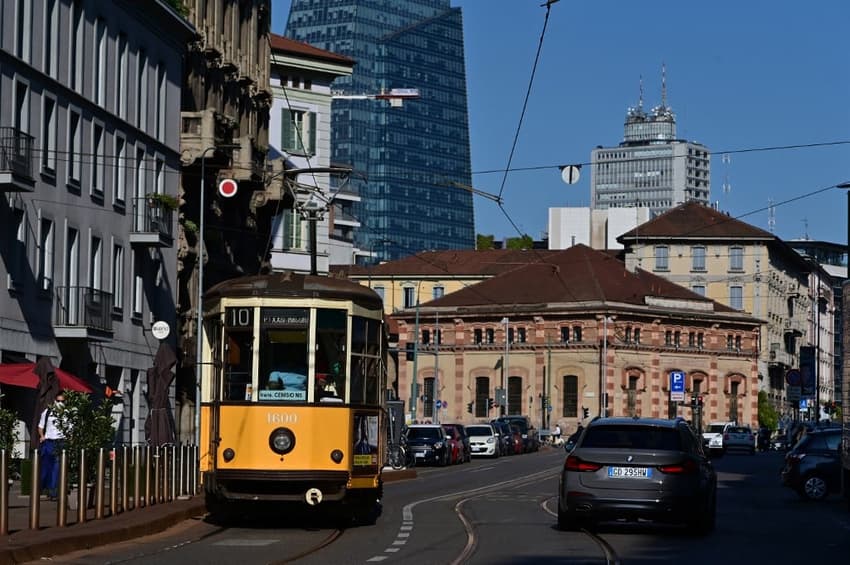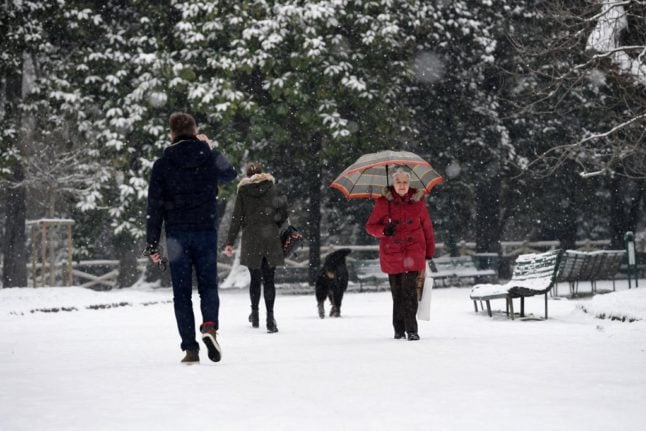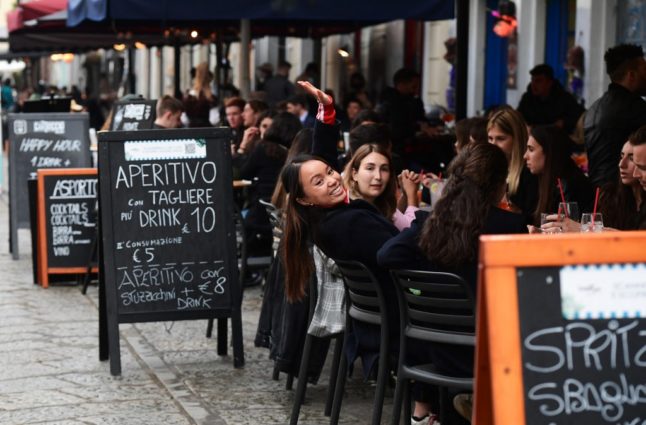What are the best Milan neighbourhoods for international residents?

Whether you're moving to Milan for the first time or are looking for a new neighbourhood to live in, here are the five best 'quartieri' for foreign nationals.
With its extraordinary international appeal and wealth of job opportunities, Milan is one of the most popular Italian cities among foreigners.
Suffice to say that the northern economic powerhouse is home to as many as 288,000 foreign nationals, who make up around 20.3 percent of the city’s total population.
Also, Milan is the second-most popular Italian destination for native English speakers, with plenty of UK and US immigrants living in the city.
But, like most other European metropolises, Milan has a very diverse urban area and some of its neighbourhoods are more suited to foreign nationals than others.
READ ALSO: Five things you’ll only know if you live in Milan
So, in no particular order, here are the city’s top five quartieri for foreign residents.
Porta Romana
Located in the south-eastern corner of Milan’s urban area, Porta Romana is one of the most liveable areas in the city.
In particular, the area is known for its very laid-back vibe, which makes it perfect for young professionals looking to bask in some blissful tranquillity after a long day at work.
But, the neighbourhood is also suited to university students as it is relatively close to some of Milan’s most prestigious colleges and rents are not as expensive as they might be closer to the city centre.
While being very residential, Porta Romana still has a good share of leisure and entertainment venues – the Fondazione Prada exhibition centre and the iconic Plastic Club are located in the area – and several bars and restaurants line the sides of most streets.
Finally, the neighbourhood is also very well connected to central Milan, with no shortage of buses, trams and metro lines servicing local residents.
Città Studi
Located in north-east Milan, Città Studi is by far the best neighbourhood for foreign students.
Once a fairly run-of-the-mill rural area, Città Studi was converted into a state-of-the-art hub of medical centres, university campuses and residential lofts over the second half of the 1900s.
READ ALSO: Moving to Italy: How much does it really cost to live in Milan?
Today, the neighbourhood is home to plenty of both local and foreign students, especially those attending courses at the Polytechnic University of Milan.
Granted, the area is not as close to the city centre as others but public transport will still get you to central Milan in a fairly reasonable amount of time.
Finally, due to the young age of its residents, the area offers several dining spots and nightlife venues.
Porta Venezia
Porta Venezia, which sits just a couple of miles north-east of Piazza Duomo, is the most multi-ethnic quartiere in Milan, thus naturally lending itself to foreign nationals.

The Indro Montanelli garden is one of the most enchanting places in the Porta Venezia area, especially so during the cold months. Photo by Miguel MEDINA / AFP
People of all races and cultural backgrounds populate the area, making it one of the most eccentric (and fun) places to live in.
With its wealth of restaurants, bars and entertainment venues, Porta Venezia keeps its residents busy on weekends as well as most weekdays.
However, this also means that the area might not be the right fit for those looking for a more quiet and relaxed environment.
Finally, Porta Venezia is also a very LGBTQ-friendly neighbourhood as it is home to lots of gay bars and alternative nightlife venues.
Brera
Nested at the heart of the city, Brera is one of the most glamorous areas in Milan.
From high-end fashion boutiques to art galleries, to quirky dining spots, Brera’s swanky atmosphere is unmatched anywhere else in the city.
READ ALSO: OPINION: Why Milan is a much better city to live in than Rome
Unsurprisingly, the neighbourhood is also one of the best locations for celebrity-spotting, should you ever be interested in that sort of thing.
That said, all the glitter and gold come at a cost and Brera has some of the most expensive rents in the whole city.
As a result, it is mostly populated by successful businessmen or high-profile figures working in the art or fashion industry.
Porta Genova and Navigli
The Porta Genova area sprawls around the Navigli canals, a few miles south of the city centre.
This is by far the most bohemian neighbourhood in Milan, with cobblestone streets, tram tracks and antique stores giving the surroundings an oddly wistful (but very pleasant) atmosphere.

With its canal-side bars and cafès, Porta Genova is one of Milan’s most fascinating areas. Photo by Miguel MEDINA / AFP
While being relatively quiet during the day, the area collectively switches on in the evening, with plenty of residents heading down to the numerous cafès and bars peppering the banks of the local canals.
This might be ideal for those looking to get in on south Milan’s nightlife, but would hardly be a good fit for those who love an early night as the streets can be pretty noisy until late.
That said, Porta Genova is still home to many people – from students to young families – and local rents are not as expensive as in more central areas.
Comments
See Also
With its extraordinary international appeal and wealth of job opportunities, Milan is one of the most popular Italian cities among foreigners.
Suffice to say that the northern economic powerhouse is home to as many as 288,000 foreign nationals, who make up around 20.3 percent of the city’s total population.
Also, Milan is the second-most popular Italian destination for native English speakers, with plenty of UK and US immigrants living in the city.
But, like most other European metropolises, Milan has a very diverse urban area and some of its neighbourhoods are more suited to foreign nationals than others.
READ ALSO: Five things you’ll only know if you live in Milan
So, in no particular order, here are the city’s top five quartieri for foreign residents.
Porta Romana
Located in the south-eastern corner of Milan’s urban area, Porta Romana is one of the most liveable areas in the city.
In particular, the area is known for its very laid-back vibe, which makes it perfect for young professionals looking to bask in some blissful tranquillity after a long day at work.
But, the neighbourhood is also suited to university students as it is relatively close to some of Milan’s most prestigious colleges and rents are not as expensive as they might be closer to the city centre.
While being very residential, Porta Romana still has a good share of leisure and entertainment venues – the Fondazione Prada exhibition centre and the iconic Plastic Club are located in the area – and several bars and restaurants line the sides of most streets.
Finally, the neighbourhood is also very well connected to central Milan, with no shortage of buses, trams and metro lines servicing local residents.
Città Studi
Located in north-east Milan, Città Studi is by far the best neighbourhood for foreign students.
Once a fairly run-of-the-mill rural area, Città Studi was converted into a state-of-the-art hub of medical centres, university campuses and residential lofts over the second half of the 1900s.
READ ALSO: Moving to Italy: How much does it really cost to live in Milan?
Today, the neighbourhood is home to plenty of both local and foreign students, especially those attending courses at the Polytechnic University of Milan.
Granted, the area is not as close to the city centre as others but public transport will still get you to central Milan in a fairly reasonable amount of time.
Finally, due to the young age of its residents, the area offers several dining spots and nightlife venues.
Porta Venezia
Porta Venezia, which sits just a couple of miles north-east of Piazza Duomo, is the most multi-ethnic quartiere in Milan, thus naturally lending itself to foreign nationals.

People of all races and cultural backgrounds populate the area, making it one of the most eccentric (and fun) places to live in.
With its wealth of restaurants, bars and entertainment venues, Porta Venezia keeps its residents busy on weekends as well as most weekdays.
However, this also means that the area might not be the right fit for those looking for a more quiet and relaxed environment.
Finally, Porta Venezia is also a very LGBTQ-friendly neighbourhood as it is home to lots of gay bars and alternative nightlife venues.
Brera
Nested at the heart of the city, Brera is one of the most glamorous areas in Milan.
From high-end fashion boutiques to art galleries, to quirky dining spots, Brera’s swanky atmosphere is unmatched anywhere else in the city.
READ ALSO: OPINION: Why Milan is a much better city to live in than Rome
Unsurprisingly, the neighbourhood is also one of the best locations for celebrity-spotting, should you ever be interested in that sort of thing.
That said, all the glitter and gold come at a cost and Brera has some of the most expensive rents in the whole city.
As a result, it is mostly populated by successful businessmen or high-profile figures working in the art or fashion industry.
Porta Genova and Navigli
The Porta Genova area sprawls around the Navigli canals, a few miles south of the city centre.
This is by far the most bohemian neighbourhood in Milan, with cobblestone streets, tram tracks and antique stores giving the surroundings an oddly wistful (but very pleasant) atmosphere.

While being relatively quiet during the day, the area collectively switches on in the evening, with plenty of residents heading down to the numerous cafès and bars peppering the banks of the local canals.
This might be ideal for those looking to get in on south Milan’s nightlife, but would hardly be a good fit for those who love an early night as the streets can be pretty noisy until late.
That said, Porta Genova is still home to many people – from students to young families – and local rents are not as expensive as in more central areas.
Join the conversation in our comments section below. Share your own views and experience and if you have a question or suggestion for our journalists then email us at [email protected].
Please keep comments civil, constructive and on topic – and make sure to read our terms of use before getting involved.
Please log in here to leave a comment.